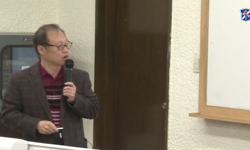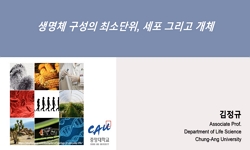Objectives This study was designed to evaluate the effects of Danggwisu-san (Dangguixu-san, DG) on bone repair from femur fracture in mice. Methods Mice were randomly divided into 4 groups (normal, control, positive control and DG 300 mg/kg-treated gr...
http://chineseinput.net/에서 pinyin(병음)방식으로 중국어를 변환할 수 있습니다.
변환된 중국어를 복사하여 사용하시면 됩니다.
- 中文 을 입력하시려면 zhongwen을 입력하시고 space를누르시면됩니다.
- 北京 을 입력하시려면 beijing을 입력하시고 space를 누르시면 됩니다.

당귀수산(當歸鬚散)이 대퇴골절 유발 생쥐에 미치는 영향 = Healing Effect of Danggwisu-san (Dangguixu-san) on Femur Fractured Mice
한글로보기https://www.riss.kr/link?id=A107264394
- 저자
- 발행기관
- 학술지명
- 권호사항
-
발행연도
2021
-
작성언어
-
- 주제어
-
KDC
500
-
등재정보
KCI등재
-
자료형태
학술저널
-
수록면
1-16(16쪽)
- DOI식별코드
- 제공처
-
0
상세조회 -
0
다운로드
부가정보
다국어 초록 (Multilingual Abstract)

Methods Mice were randomly divided into 4 groups (normal, control, positive control and DG 300 mg/kg-treated group). In order to investigate the effects of DG on gene expressions in experimental animals with fracture, we measured the levels of bone morphogenetic protein-2 (BMP2), cyclooxygenase-2 (COX2), Sox9, collagen type Ⅱ alpha 1 chain (Col2a1), runt-related transcription factor 2 (Runx2), osterix genes. After the cytotoxicity test, we analyzed the levels of expression of osteocalcin and Runx2, and tumor necrosis factor-α (TNF-α), a pro-inflammatory cytokine. The process of fusion in the fracture was also investigated by gross examination.
Results Through in vivo BMP2, COX2 gene expression significantly decreased. Sox9 significantly increased. Col2a1, Runx2, osterix gene expression also increased as well, but there was no statistical significance. The degree of unilateral fracture fusion investigated by gross examination was significantly faster than those of the other groups. Through in vitro the level of TNF-α in macrophages was increased by DG in a dose-dependent mannerand and 250 and 500 μg/mL showed statistical significance. Osteocalcin and Runx2 genes expressions increased when DG was treated in osteoblasts.
Conclusions DG promotes the healing of the fracture through the expression of bone repair-related genes and TNF-α production. This study may set the foundation for the clinical application of DG to the patients with bone fractures. (J Korean Med Rehabil 2021;31(1):1-16)
Objectives This study was designed to evaluate the effects of Danggwisu-san (Dangguixu-san, DG) on bone repair from femur fracture in mice.
Methods Mice were randomly divided into 4 groups (normal, control, positive control and DG 300 mg/kg-treated group). In order to investigate the effects of DG on gene expressions in experimental animals with fracture, we measured the levels of bone morphogenetic protein-2 (BMP2), cyclooxygenase-2 (COX2), Sox9, collagen type Ⅱ alpha 1 chain (Col2a1), runt-related transcription factor 2 (Runx2), osterix genes. After the cytotoxicity test, we analyzed the levels of expression of osteocalcin and Runx2, and tumor necrosis factor-α (TNF-α), a pro-inflammatory cytokine. The process of fusion in the fracture was also investigated by gross examination.
Results Through in vivo BMP2, COX2 gene expression significantly decreased. Sox9 significantly increased. Col2a1, Runx2, osterix gene expression also increased as well, but there was no statistical significance. The degree of unilateral fracture fusion investigated by gross examination was significantly faster than those of the other groups. Through in vitro the level of TNF-α in macrophages was increased by DG in a dose-dependent mannerand and 250 and 500 μg/mL showed statistical significance. Osteocalcin and Runx2 genes expressions increased when DG was treated in osteoblasts.
Conclusions DG promotes the healing of the fracture through the expression of bone repair-related genes and TNF-α production. This study may set the foundation for the clinical application of DG to the patients with bone fractures. (J Korean Med Rehabil 2021;31(1):1-16)
동일학술지(권/호) 다른 논문
-
- 한방재활의학과학회
- 박중현 ( Jung-hyun Park )
- 2021
- KCI등재
-
소경활혈탕가미방(疎經活血湯加味方)의 관절염에 미치는 효과
- 한방재활의학과학회
- 조주현 ( Joo-hyun Jo )
- 2021
- KCI등재
-
Clostridium difficile에 대한 항균 한약재 탐색 연구
- 한방재활의학과학회
- 성은학 ( Eunhak Seong )
- 2021
- KCI등재
-
- 한방재활의학과학회
- 김선길 ( Sun-gil Kim )
- 2021
- KCI등재




 ScienceON
ScienceON KISS
KISS






